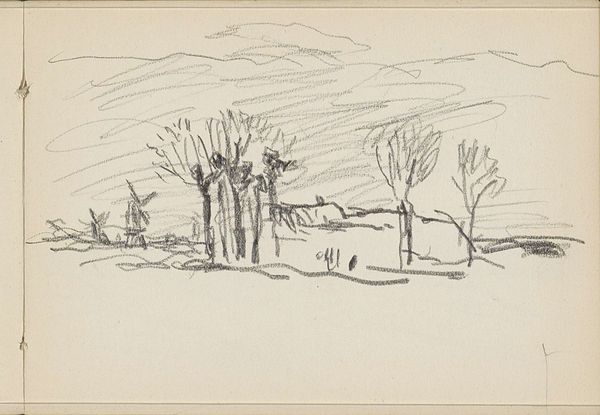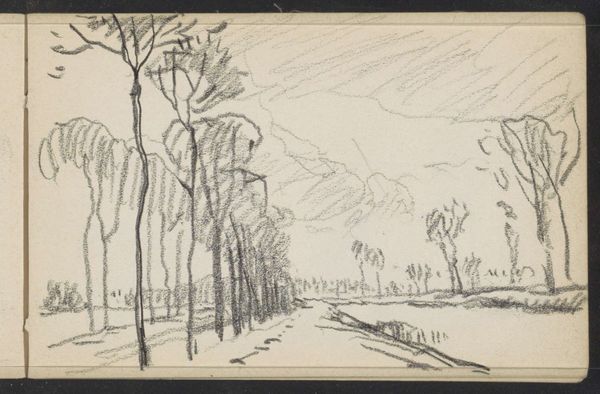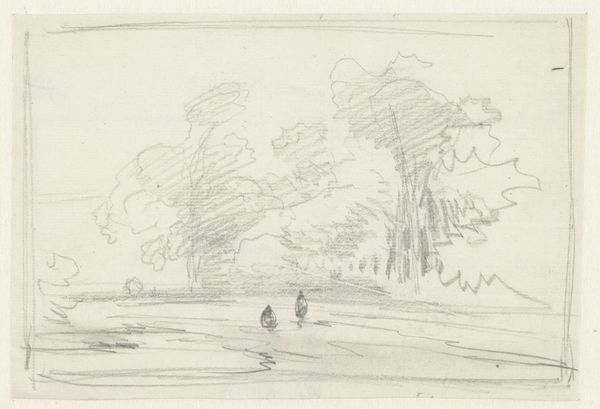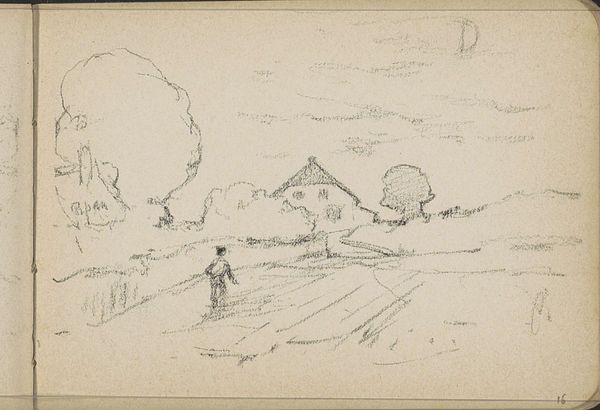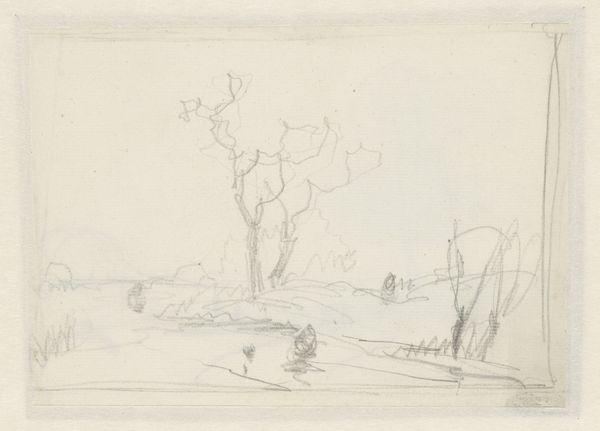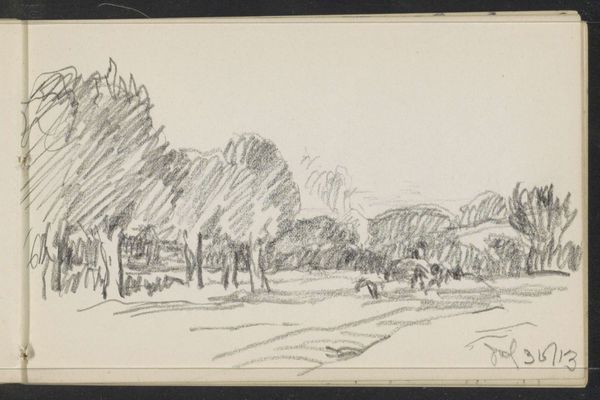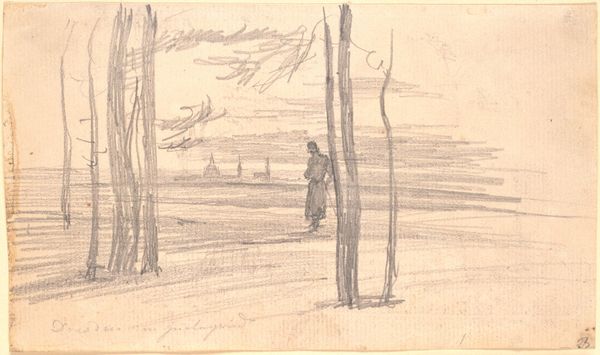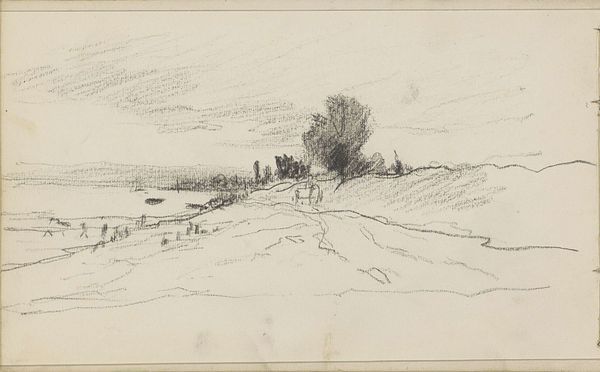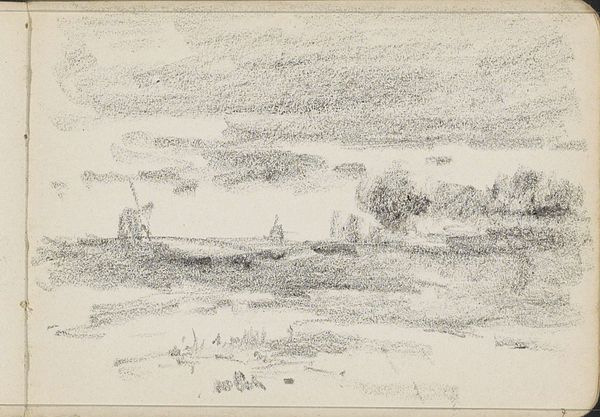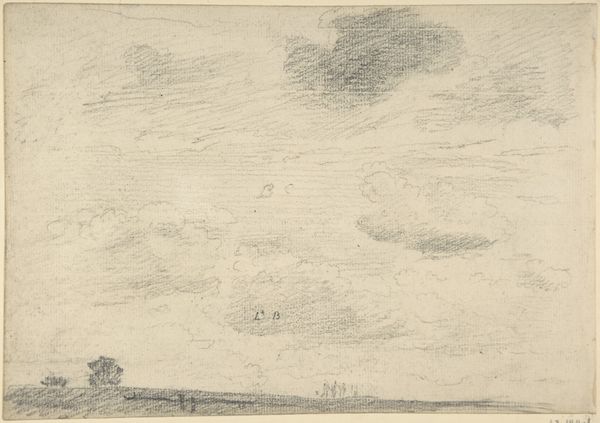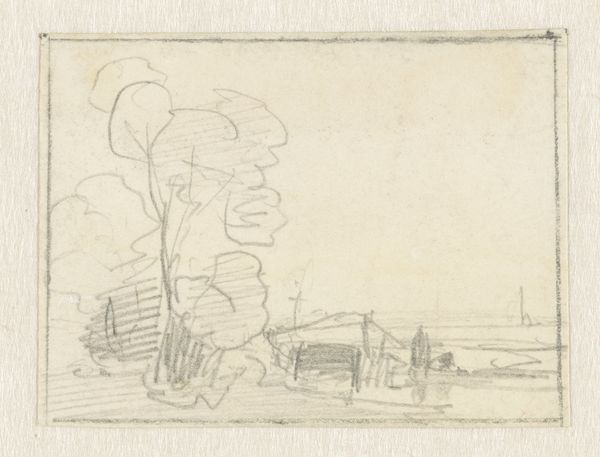
drawing, plein-air, pencil
#
drawing
#
plein-air
#
landscape
#
figuration
#
road
#
pencil
#
realism
Copyright: Rijks Museum: Open Domain
Editor: We're looking at Willem Cornelis Rip’s “Figuur op een pad bij Ingen,” likely created between 1866 and 1922. It’s a plein-air pencil drawing of a figure on a path in a landscape. It feels very simple, almost melancholic, with a lone figure walking into the distance. What do you see in this piece? Curator: This drawing holds a subtle power, doesn’t it? The path itself is the key. Consider it as more than just a road. Paths have historically represented journeys, both literal and metaphorical. Think of the pilgrim’s path, the hero’s journey – the solitary figure evokes that symbolism. Editor: So the figure isn’t just a person in a landscape, but a representation of something more? Curator: Precisely! And notice the buildings in the distance - possibly a church and a windmill, essential structures in a rural Dutch landscape. The church connects to spirituality, and the windmill evokes labour and survival. The artist uses these as anchors to give our figure a world to exist within, to move towards. This personification connects them to our shared history and culture. Does that symbolism resonate for you? Editor: Definitely. Seeing it that way, it transforms the drawing from a simple sketch into something with deeper meaning and makes me wonder what that figure is walking toward, whether literally or figuratively. Curator: Indeed. And that question itself reflects the symbolic power Rip invested within the work. He lets us see something about humanity and how landscapes tie people together through both time and culture. Editor: I didn't initially grasp the depth of meaning, but your reading illuminates so much. It's fascinating how the mundane can be imbued with such symbolic richness!
Comments
No comments
Be the first to comment and join the conversation on the ultimate creative platform.
